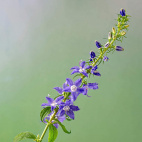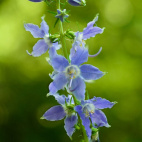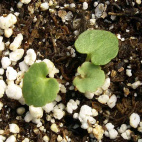Harebell Seeds
- HOW TO GROW
- FAST FACTS
- REVIEWS
HOW TO GROW
Sowing: Direct sow in late fall, planting the seed on the surface of the soil since it needs light to germinate. For spring planting, stratify by mixing the seed with moist sand and storing in the refrigerator for 30 days before planting. Stratified seed can also be started indoors, planted on the surface of a flat and watered from the bottom; keep at a temperature of 60-65 degrees F until germination.
Growing: This plant prefers dry or sandy soil, though it adapts very well to rocky or woodland soil. When grown from seed, it may not flower until its second year. Seedlings should be watered occasionally until they become developed; mature plants prefer dry soil and only need watering in drought conditions. This plant will self-seed, though it does not become invasive. Harebell attracts bees while resisting rabbits and deer.
Harvesting: For fresh flowers, cut the stems and place them in water immediately.
Seed Saving: Since the tiny seed pods on the stalk will ripen at different times, the seed will need to be harvested over period of time. Shake the entire plant over a container to remove the seed that has ripened, repeating the process every few days until all the seed on the stalk has ripened. Store the cleaned seed in a cool, dry place.
FAST FACTS
Common Names: Scottish Harebell, Bluebells of Scotland, Bluebell, Bellflower, Fairy Thimbles
Latin Name: Campanula rotundifolia
Species Origin: Europe
Type: Native Wildflowers
Life Cycle: Perennial
USDA Zones: 2, 3, 4, 5, 6, 7, 8, 9
US Regions: Mountain, Arid/Desert, Plains/Texas, Midwest, Northern, Northeast
Seeds per Ounce: 900,000
Stratification: Cold/Wet for 4 Weeks
Germination Ease: Stratify 4 Weeks
Sunlight: Full Sun, Part Sun
Height: 14 Inches
Color: Purple
Bloom Season: Blooms Early Summer, Blooms Late Summer, Blooms Early Fall
Uses: Attracts Pollinators, Cut Flowers, Deer Resistant
Excellent seed. Very good germination.
Native Wildflower Seeds
I was so happy to find the Everwilde Farms online. I had been learning about native plants from the Audubon Society website and I wanted to find seeds that were recommended. I found many locally, but a few were difficult to locate. I love the information that was sent with my seeds...that described the best way to plant and when. It was so helpful. And I loved that the seeds come in vacuum sealed packets. I feel confident in the quality of the seeds. Thank you !
Memories of my childhood and dad
Pleased with your service. Most impressed by your packaging. Can't wait to plant and have a crop to continue my personal history to share with the Great Grands, commonly known as The Littles.. Thanks
Tiny seeds
They were tiny but not difficult to with a little spoon
poor germination poor vigor
This seed had poor germination and poor vigor, as if the seed were old seed. I utilized seed that I harvested from established plants along side, and it germinated and thrived, in the same soil at the same planting time.
DESCRIPTION
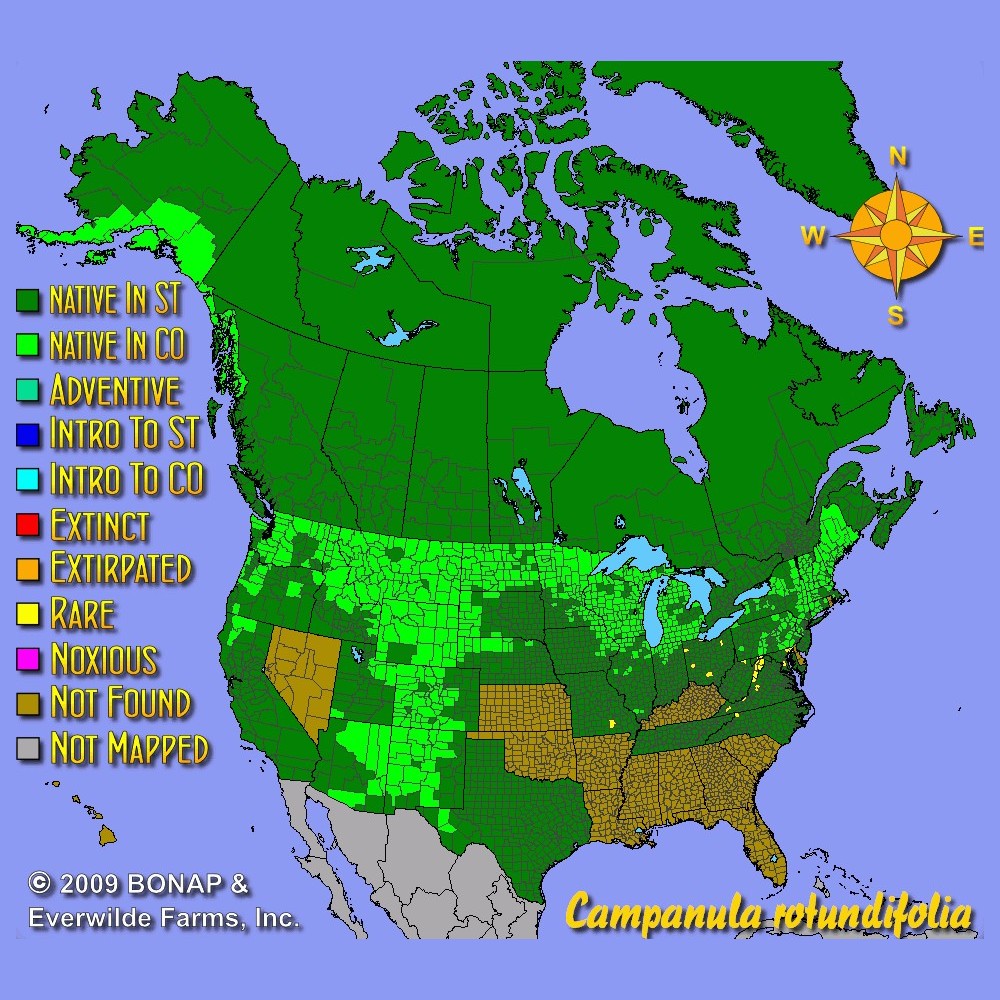
HOW TO GROW
Sowing: Direct sow in late fall, planting the seed on the surface of the soil since it needs light to germinate. For spring planting, stratify by mixing the seed with moist sand and storing in the refrigerator for 30 days before planting. Stratified seed can also be started indoors, planted on the surface of a flat and watered from the bottom; keep at a temperature of 60-65 degrees F until germination.
Growing: This plant prefers dry or sandy soil, though it adapts very well to rocky or woodland soil. When grown from seed, it may not flower until its second year. Seedlings should be watered occasionally until they become developed; mature plants prefer dry soil and only need watering in drought conditions. This plant will self-seed, though it does not become invasive. Harebell attracts bees while resisting rabbits and deer.
Harvesting: For fresh flowers, cut the stems and place them in water immediately.
Seed Saving: Since the tiny seed pods on the stalk will ripen at different times, the seed will need to be harvested over period of time. Shake the entire plant over a container to remove the seed that has ripened, repeating the process every few days until all the seed on the stalk has ripened. Store the cleaned seed in a cool, dry place.
FAST FACTS
Common Names: Scottish Harebell, Bluebells of Scotland, Bluebell, Bellflower, Fairy Thimbles
Latin Name: Campanula rotundifolia
Species Origin: Europe
Type: Native Wildflowers
Life Cycle: Perennial
USDA Zones: 2, 3, 4, 5, 6, 7, 8, 9
US Regions: Mountain, Arid/Desert, Plains/Texas, Midwest, Northern, Northeast
Seeds per Ounce: 900,000
Stratification: Cold/Wet for 4 Weeks
Germination Ease: Stratify 4 Weeks
Sunlight: Full Sun, Part Sun
Height: 14 Inches
Color: Purple
Bloom Season: Blooms Early Summer, Blooms Late Summer, Blooms Early Fall
Uses: Attracts Pollinators, Cut Flowers, Deer Resistant
Reviews
Review
Excellent seed. Very good germination.
Review
Native Wildflower Seeds
I was so happy to find the Everwilde Farms online. I had been learning about native plants from the Audubon Society website and I wanted to find seeds that were recommended. I found many locally, but a few were difficult to locate. I love the information that was sent with my seeds...that described the best way to plant and when. It was so helpful. And I loved that the seeds come in vacuum sealed packets. I feel confident in the quality of the seeds. Thank you !
Review
Memories of my childhood and dad
Pleased with your service. Most impressed by your packaging. Can't wait to plant and have a crop to continue my personal history to share with the Great Grands, commonly known as The Littles.. Thanks
Review
Tiny seeds
They were tiny but not difficult to with a little spoon
Review
poor germination poor vigor
This seed had poor germination and poor vigor, as if the seed were old seed. I utilized seed that I harvested from established plants along side, and it germinated and thrived, in the same soil at the same planting time.
Also Consider These:
-
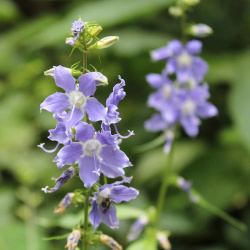 Tall Bellflower Seeds
Campanula americana
These violet-blue stunners grow in tall spikes that are really unique with star-shaped flowers all along the stalk. This easy-to-grow wildflower flourishes in woodland areas or moist fields but can grow in average garden soil in full sun as well.Quick View$3.75 Pkt - $50.00 / Oz
Tall Bellflower Seeds
Campanula americana
These violet-blue stunners grow in tall spikes that are really unique with star-shaped flowers all along the stalk. This easy-to-grow wildflower flourishes in woodland areas or moist fields but can grow in average garden soil in full sun as well.Quick View$3.75 Pkt - $50.00 / Oz -
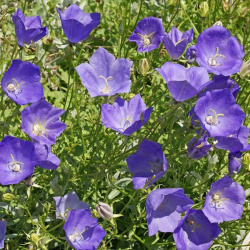 Tussock Bellflower Seeds
Campanula carpatica
A petite plant, this little gem makes a lovely addition to rock gardens. The open purple bells, with a subtle sweet scent, adds to its charm. It is great for small spaces.Quick View$3.25 Pkt - $16.57 / Oz
Tussock Bellflower Seeds
Campanula carpatica
A petite plant, this little gem makes a lovely addition to rock gardens. The open purple bells, with a subtle sweet scent, adds to its charm. It is great for small spaces.Quick View$3.25 Pkt - $16.57 / Oz








